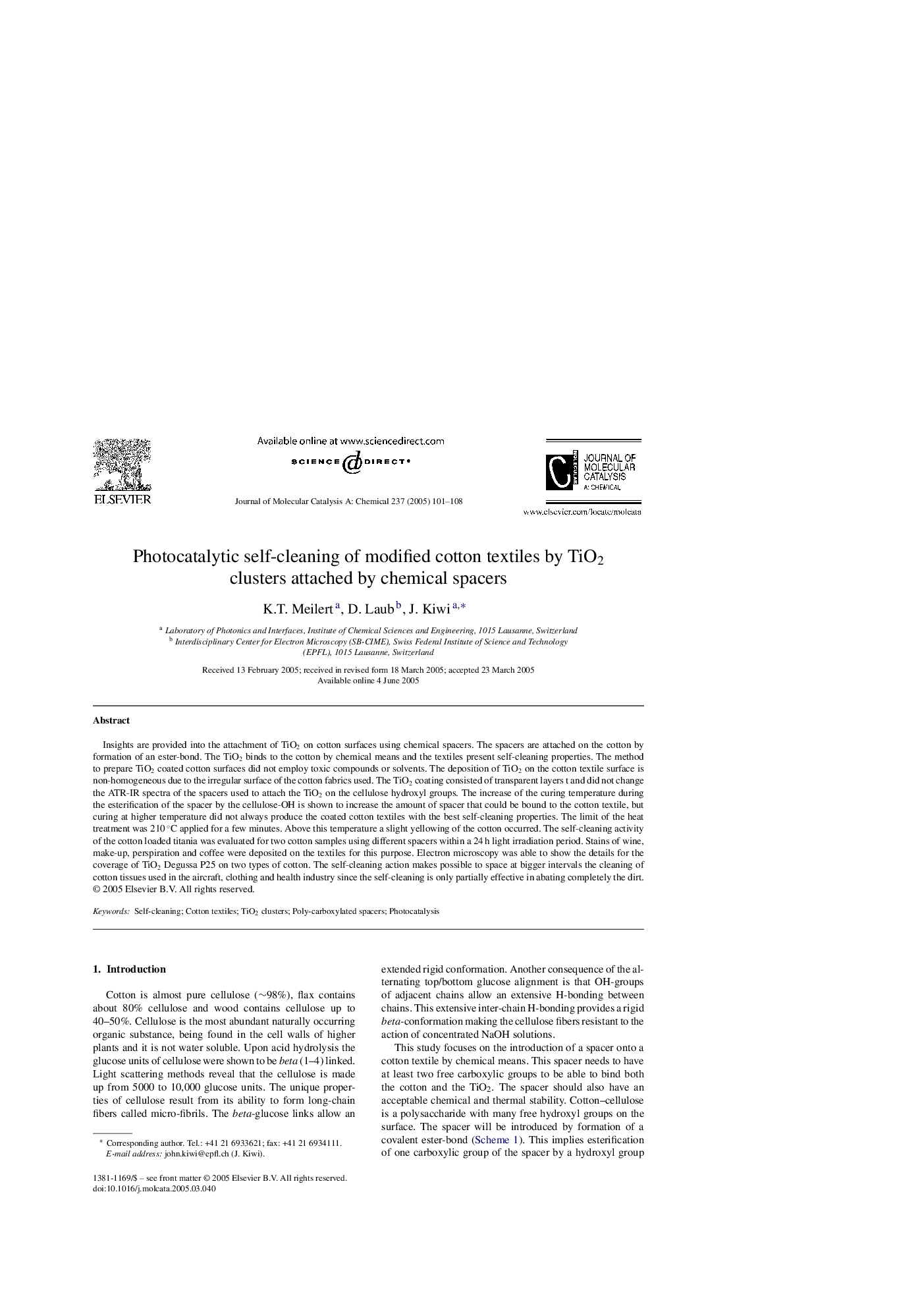| Article ID | Journal | Published Year | Pages | File Type |
|---|---|---|---|---|
| 9614564 | Journal of Molecular Catalysis A: Chemical | 2005 | 8 Pages |
Abstract
Insights are provided into the attachment of TiO2 on cotton surfaces using chemical spacers. The spacers are attached on the cotton by formation of an ester-bond. The TiO2 binds to the cotton by chemical means and the textiles present self-cleaning properties. The method to prepare TiO2 coated cotton surfaces did not employ toxic compounds or solvents. The deposition of TiO2 on the cotton textile surface is non-homogeneous due to the irregular surface of the cotton fabrics used. The TiO2 coating consisted of transparent layers t and did not change the ATR-IR spectra of the spacers used to attach the TiO2 on the cellulose hydroxyl groups. The increase of the curing temperature during the esterification of the spacer by the cellulose-OH is shown to increase the amount of spacer that could be bound to the cotton textile, but curing at higher temperature did not always produce the coated cotton textiles with the best self-cleaning properties. The limit of the heat treatment was 210 °C applied for a few minutes. Above this temperature a slight yellowing of the cotton occurred. The self-cleaning activity of the cotton loaded titania was evaluated for two cotton samples using different spacers within a 24 h light irradiation period. Stains of wine, make-up, perspiration and coffee were deposited on the textiles for this purpose. Electron microscopy was able to show the details for the coverage of TiO2 Degussa P25 on two types of cotton. The self-cleaning action makes possible to space at bigger intervals the cleaning of cotton tissues used in the aircraft, clothing and health industry since the self-cleaning is only partially effective in abating completely the dirt.
Related Topics
Physical Sciences and Engineering
Chemical Engineering
Catalysis
Authors
K.T. Meilert, D. Laub, J. Kiwi,
